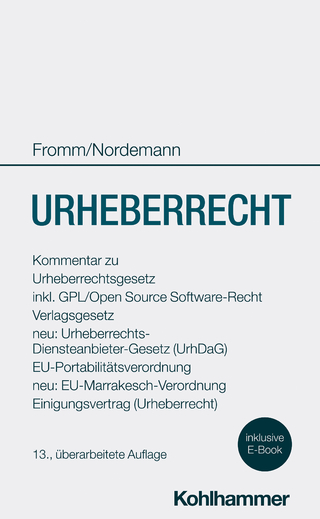
The Making of Modern Intellectual Property Law
Seiten
1999
Cambridge University Press (Verlag)
978-0-521-56363-5 (ISBN)
Cambridge University Press (Verlag)
978-0-521-56363-5 (ISBN)
This book is the first detailed historical account of why intellectual property law with its sub-categories of patents, copyright, designs and trade marks took the shape that it did over the course of the nineteenth century. The authors also discuss ways in which the law grants property status to intangibles.
One of the common themes in recent public debate has been the law's inability to accommodate the new ways of creating, distributing and replicating intellectual products. In this book the authors argue that in order to understand many of the problems currently confronting the law, it is necessary to understand its past. This is its first detailed historical account. In this book the authors explore two related themes. First, they explain why intellectual property law came to take its now familiar shape with sub-categories of patents, copyright, designs and trade marks. Secondly, the authors set out to explain how it is that the law grants property status to intangibles. In doing so they explore the rise and fall of creativity as an organising concept in intellectual property law, the mimetic nature of intellectual property law and the important role that the registration process plays in shaping intangible property.
One of the common themes in recent public debate has been the law's inability to accommodate the new ways of creating, distributing and replicating intellectual products. In this book the authors argue that in order to understand many of the problems currently confronting the law, it is necessary to understand its past. This is its first detailed historical account. In this book the authors explore two related themes. First, they explain why intellectual property law came to take its now familiar shape with sub-categories of patents, copyright, designs and trade marks. Secondly, the authors set out to explain how it is that the law grants property status to intangibles. In doing so they explore the rise and fall of creativity as an organising concept in intellectual property law, the mimetic nature of intellectual property law and the important role that the registration process plays in shaping intangible property.
Part I. Towards a Property in Intangibles: 1. Property in mental labour; 2. The mentality of intangible property; Part II. The Emergence of a Modern Intellectual Property Law: 3. Designing the law; 4. Managing the legal boundaries; Part III. Towards an Intellectual Property Law: 5. Crystallization of the categories; 6. Completing the framework; 7. Explanations for the shape of intellectual property law; Part IV. Transformations in the Intellectual Property Law: 8. Changes in the framework; 9. From creation to object; 10. Closure and its consequences; 11. Remembering and forgetting; Bibliography.
| Erscheint lt. Verlag | 8.7.1999 |
|---|---|
| Reihe/Serie | Cambridge Intellectual Property and Information Law |
| Verlagsort | Cambridge |
| Sprache | englisch |
| Maße | 160 x 237 mm |
| Gewicht | 524 g |
| Themenwelt | Recht / Steuern ► EU / Internationales Recht |
| Recht / Steuern ► Wirtschaftsrecht ► Urheberrecht | |
| ISBN-10 | 0-521-56363-1 / 0521563631 |
| ISBN-13 | 978-0-521-56363-5 / 9780521563635 |
| Zustand | Neuware |
| Haben Sie eine Frage zum Produkt? |
Mehr entdecken
aus dem Bereich
aus dem Bereich
Textausgabe zum deutschen, europäischen und internationalen Patent-, …
Buch | Softcover (2023)
dtv Verlagsgesellschaft
CHF 24,95
Kommentar zu Urheberrechtsgesetz, Verlagsgesetz, Neu: …
Buch | Hardcover (2024)
Kohlhammer (Verlag)
CHF 479,95


